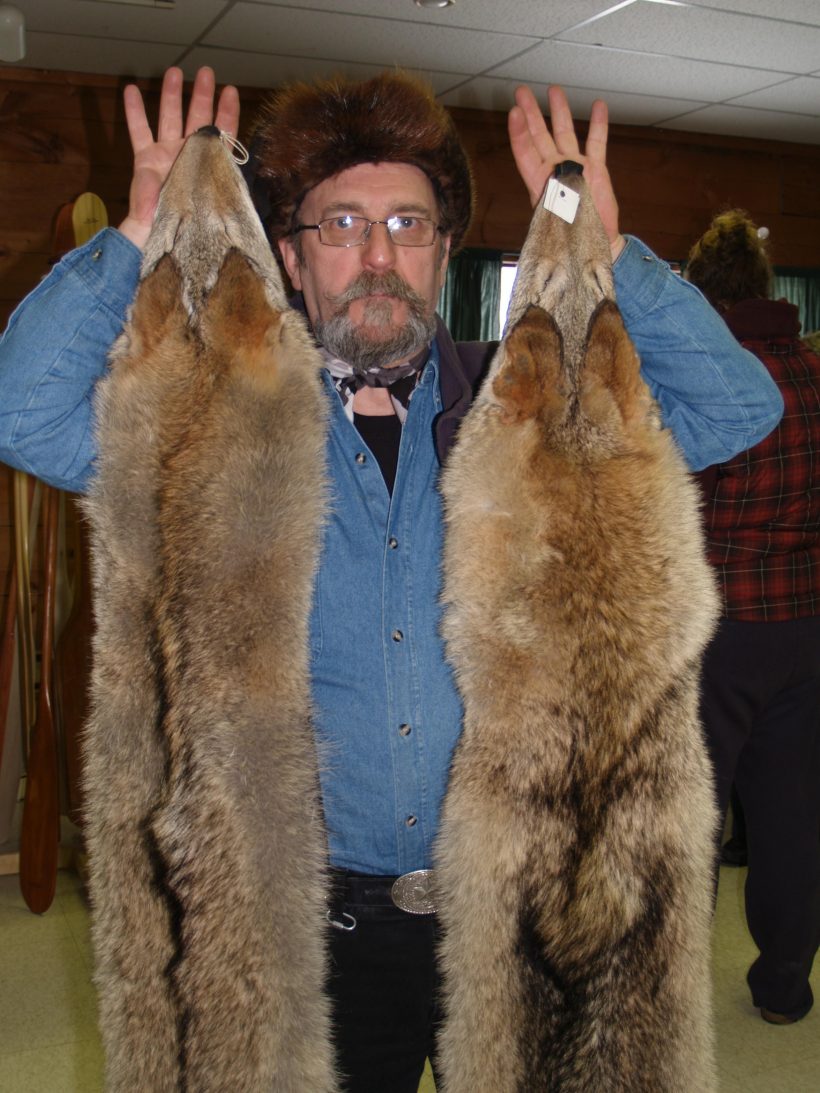ONTARIO WOLVES – An Update
First Some Background
2001 – COSSARO, the Committee on the Status of Species at Risk in Ontario, deemed the eastern wolf a species of “Special Concern” and the provincial government announced that trapping/killing them in the 39 or 40 (depending upon your source) townships surrounding Algonquin P.P. has come to an “indeterminate” end.
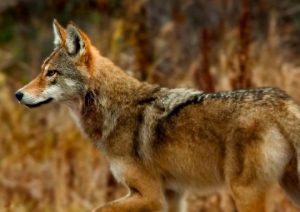
2005 –The Committee on the Status of Endangered Wildlife in Canada (COSEWIC), under the jurisdiction of the federal Species at Risk Act (SARA) deemed the eastern wolf a “Special Concern”.
2015 – COSEWIC declared the eastern wolf as “Threatened”.
Prior to the ban to trap eastern wolves, their survival rate was 65-67%. In 2001 that rate spiked to 80-85% then levelled off to 75%.
There are 3 main specimens of wolves native to Ontario: the grey (Canadian spelling) wolf, the eastern wolf and the eastern coyote. The grey is the largest, about 40-50 kg, and it generally occupies northern Ontario such as the Hudson Bay Lowlands. Known as the “Old World” wolf the grey, which can be seen in many different colours, apparently crossed the Bering Bridge to reach the “New World”.
Eastern wolves call Algonquin Park and its environs “home”. Medium-sized they weigh in at 25-35 kg and generally have reddish fur on the snout, behind the ears, and on the legs, complimented with black and silver on their backs.
The eastern coyote (pronunciation varies) is 7-20 kg and features a narrow head with longer legs on a shorter body. Originally they were a western coyote that immigrated to southern Ontario when settlers killed off the big predators and cleared land for agriculture thereby creating a habitat for them to occupy. It appears that the first recorded sighting of a coyote was in 1919.
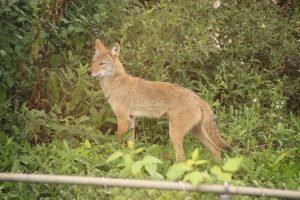
The western coyote hybridized with the eastern wolf creating the eastern coyote. They are referred to as “New World”.
The grey and eastern wolves are deer specialists.
When it comes to hybrids, the eastern coyote and the eastern wolf will mate; the eastern wolf and the grey wolf will mate (also known as the Great Lakes/Boreal wolf); but the eastern coyote and the grey wolf won’t.
Based upon DNA obtained from trappers, fur auctions ….85% of the eastern wolves range is in Central Ontario and they are “generally healthy.”
Living in family packs wolves and coyotes appear to be monogamous as long as they live. The pack size is reflected in the availability of food; the more food the larger the pack. BUT – there is just one breeding pair per territory.
Wolves mature more slowly than coyotes.
2023 – Recent research by Christopher J. Kyle, Professor of Forensic Science, Trent University, Peterboro, Ontario, published by Oxford University Press, provides interesting new evidence about the evolution of North American wolves.
Eastern wolves have been the subject of considerable dispute or debate as to whether these canids represent a distinctive species or are they the result of the hybridization of grey wolves and coyotes? FYI, the Canidae family include coyotes, foxes, jackals, wolves and domestic dogs.
The eastern wolf, aka the eastern timber wolf or the Algonquin wolf, has been recognized by some as a distinct species based upon genetic and behavioural studies. In Ontario, under the provincial ESA (Endangered Species Act), it is “Threatened”.
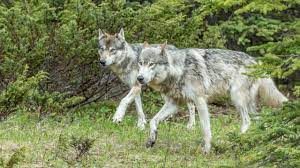
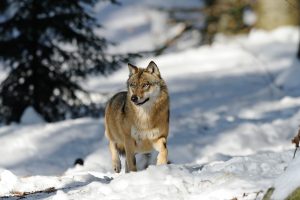
Ontario manages the eastern, grey and coyote as a single species across their primary range in central Ontario because it is so difficult for people to visually distinguish the three. I recall the government having to send furs for DNA testing to ascertain if they were actually wolf furs.
Researchers sequenced whole genomes of 25 animals of known origin and levels of contemporary hybridization, representative of all Canadian wolf-like canid types. The analysis revealed that eastern wolves that inhabit the Great Lakes region in SE Canada are genetically distinct from other canids in the region. It appears that eastern wolves evolved separately from grey wolves about 67,000 years ago. Scientists believe that eastern wolves bred with coyotes about 37.000 years ago and continue to mix with both coyotes and grey wolves, as previously mentioned.
The paper’s lead author, Christopher J. Kyle, said “this work represents a strong international collaboration that culminates from complementary expertise between wolf experts from the OMNR&F, scholars from the University of Ferrara in Italy and Trent University, Peterboro, Ontario, Canada, with a long-standing interest in North American Canis ancestry and genetics.”
